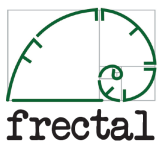Healthcare: chasing the right fit between Process and IT..
We have already noted that international healthcare systems are under pressure and that healthcare is a complex, information-intensive system.
We have also noted the mixed success of the Health IT industry to date, which also highlights the often poor fit between healthcare processes and related information systems.
In order to address this key challenge for healthcare, learning from the findings from the NHS CfH Model Community, we sought related solutions.
Aiming to tackle these issues of complexity and the alignment of process improvement and information technologies evident within NHS CfH NPfIT, I was part of a team that set out to explore the complexity of healthcare, looking for common generic process patterns, seeking common requirements and related standards.
The key findings from that work can be summarised along the usual key themes..
People
In order to move beyond the challenges of specific clinical groups articulating specific clinical processes and specific IT requirements, clinicians need a greater understanding of the importance of generic reusable solutions.
Process
As the healthcare domain lacks a common vocabulary around healthcare process, we sought to avoid the usual complicated look at process.
As per the Cynefin framework we took the view that healthcare is a complex rather than complicated system, therefore set out to seek common process patterns across healthcare. It was my observation that that some important process analysis methodologies omit to explore generic patterns amidst complex systems, but typically take a “complicated” approach to process analysis (e.g. BPMN).
It should be noted that the business process analysis field is not yet a mature science, so there exists significant room for further development in this area.
The process improvement methodology I like to borrow from to explain this challenge is named PISO (Process Improvement for Strategic Objectives) explains business processes at 4 layers.
As Is- Physical
As Is- Logical
To Be- Logical
To Be- Physical
This important separation of process thinking from physical to logical is key to identifying generic process patterns in healthcare (as in any other complex field).
Naturally it should be noted that thinking in physical/logical layers of process does not come naturally to all clinicians, hence this analysis should not /need not be redone all the time…
Our approach to seek generic process patterns in healthcare was/is very useful.
The key point here is that while healthcare is a deeply complex system at the core of the healthcare process, the encounter between patient and clinician, there are a very small number of recurrent patterns of generic processes, which exhibit a cyclical nature. This conclusion is not new, but it has profound implications particularly with regard to the design of health information systems architecture.
Information Technology
A conjoint approach to change focussed on generic processes can offer a plausible route for the greater alignment between process improvement methodologies such as Lean Thinking with the related requirements for a Service Oriented Architecture in Healthcare.
(While this complex systems oriented thinking is not confined to healthcare, I shall confine my discussion within healthcare to further develop the point).
At one level this requirement can begin to be met via portal development, integration of existing systems and a service oriented architecture approach to tackling core process requirements such as the NHS Clinical 5. Elements of this approach are gaining increasing traction in many places internationally and form the basis of our own current Leeds-TH Informatics Strategy.
At a deeper level there is a more profound requirement, i.e. a -generic healthcare process- related – information system architecture- is needed in healthcare, therefore I then went in search of related standards from the healthcare standards field.
While the main players in the healthcare standards field (HL7, IHTSDO, IHE) have not developed a clinical process oriented health record architecture standard, in 2006 the openEHR Foundation published version 1.0 of an openEHR architecture specification for this very purpose. The openEHR specification is in itself the result of an evolving body of European and Australian Research and Development that laid the groundwork for openEHR. While I must admit it took some effort to digest the key elements of the specification, openEHR does I believe contain several of the key elements that are required in the healthcare information systems standards space, which I will explore shortly.
So though it has taken me some time as a frontline clinician to draw this conclusion……
..if our ambitions are to improve care across healthcare systems, with better processes at the frontline, greater sharing of patient information between providers, more seamless audit and research and deliver greater value for money in healthcare……
…..then I believe an open health record architecture standard is now needed..
Since drawing that conclusion I have become closely involved with the openEHR Foundation and in the next article I will delve further into the fit between complexity, healthcare and openEHR.
- Healthcare: openEHR’s potential to handle Complexity & Diversity
- Healthcare change: why “Open Source” is part of the recipe..
References:
Herbert I, Shannon T, (2006) “People, Process, Technology
A Guide to Urgent Care Service Improvement with IT”, NHS Connecting for Health Do Once and Share Programme
Feied CF, Handler JA, Smith MS, Gillam M, Kanhouwa M, Rothenhaus T, Conover K, Shannon T (2004) “Clinical information systems: instant ubiquitous clinical data for error reduction and improved clinical outcomes” Acad Emerg Med. 2004 Nov;11(11):1162-9.





I couldn’t agree with you more. There has to be a better way. An open source system that allows the physician and patient to review working diagnosis in routine documentation that could be universally agreeable among different care sites is the way to go. I am working in rural Illinois as a physician on a new EMR system. They have been live for over a month now and are still refiguring the build as it applies to our site. There are apparently endless forms for nurse and techs to enter info about patients. Doctors have only the option to dictate and have our notes scanned in or to free text in an area that is hard to access and confirms none of the other data and adds nothing to the discreet information collection. It is as if the data submitted by the physician has little relevance and is buried in mounds of useless records… I had so much hope that safety and clarity would improve and so far see only the opposite
By: Risha on July 7, 2013
at 2:34 pm